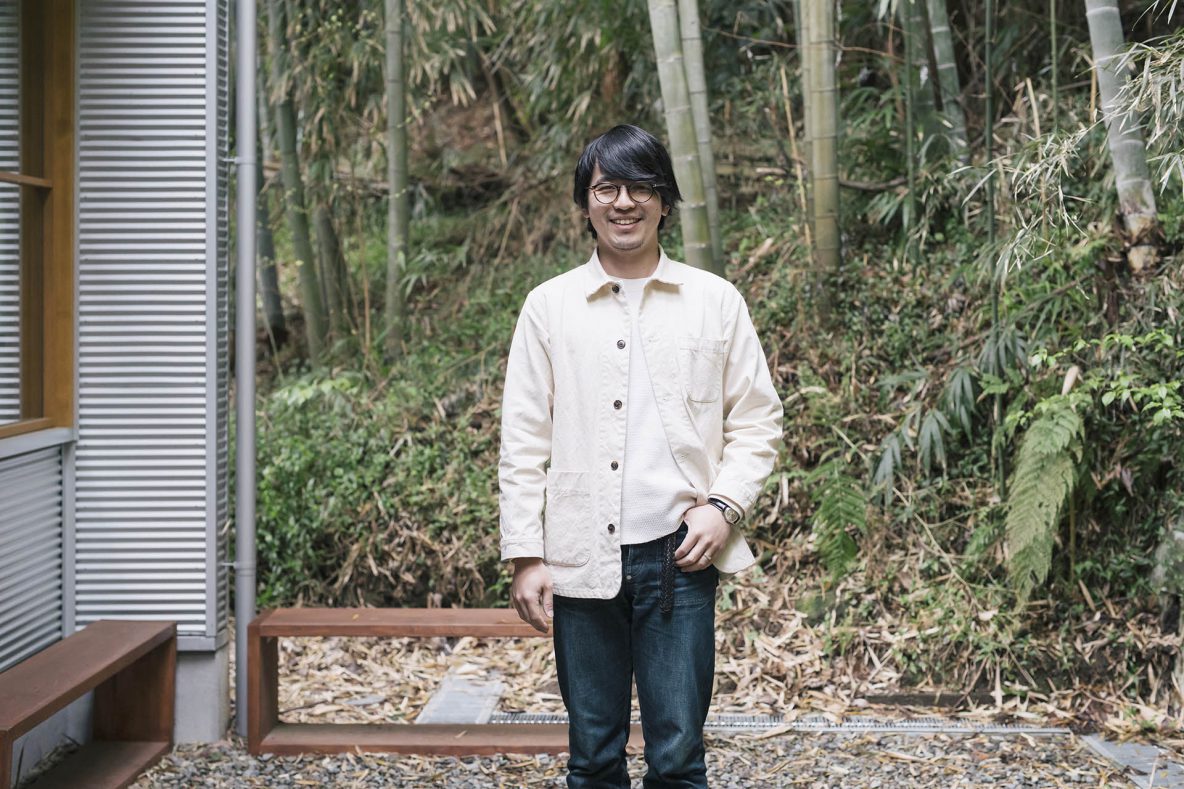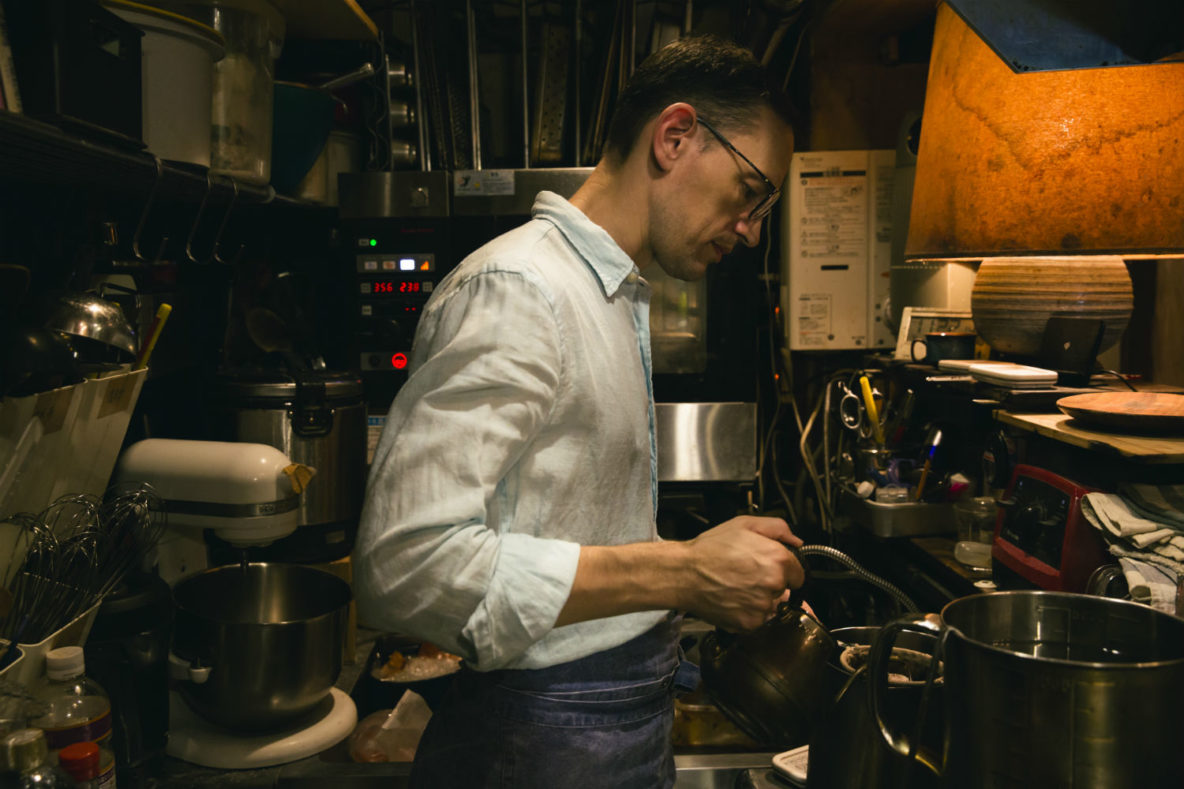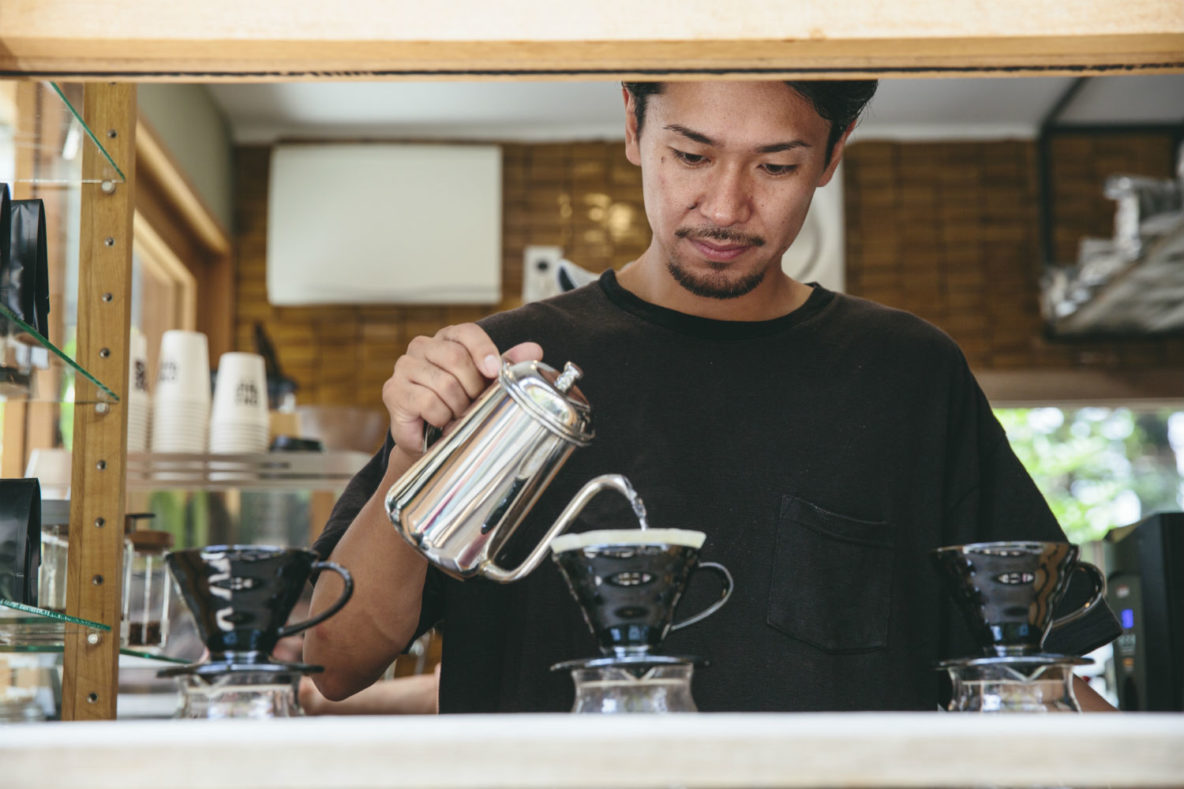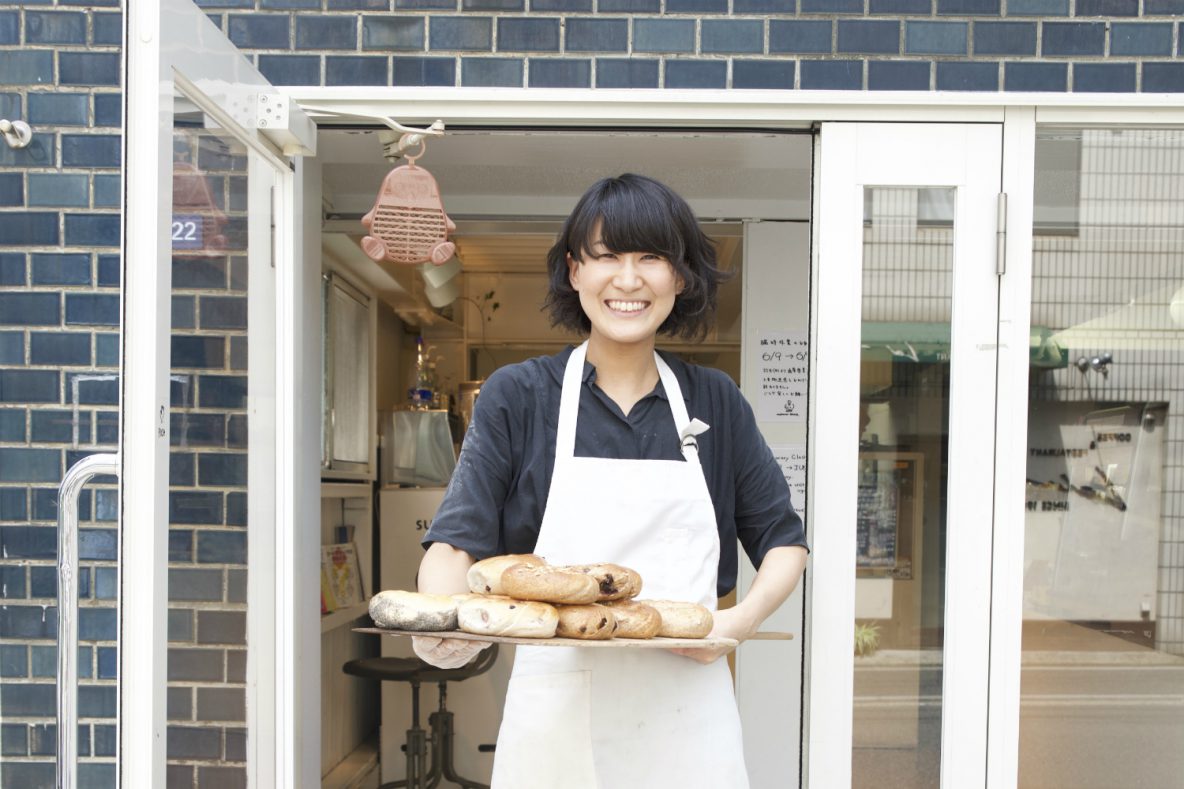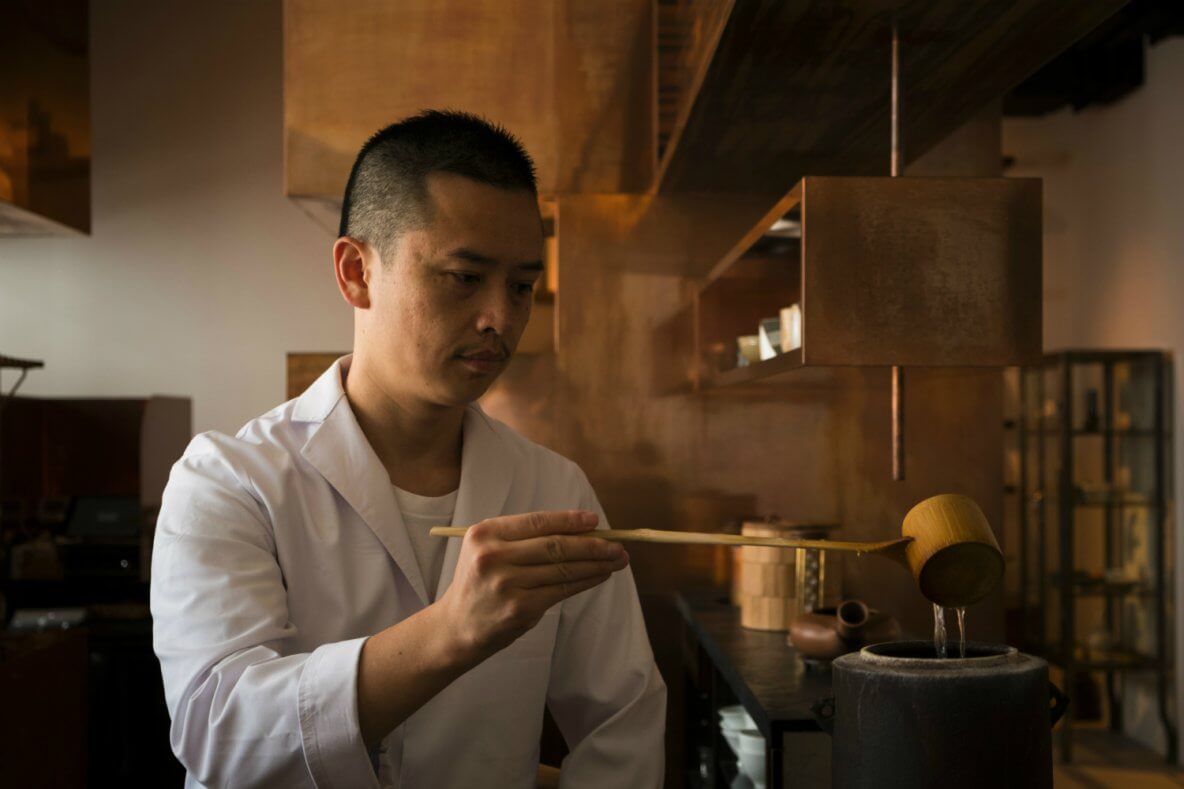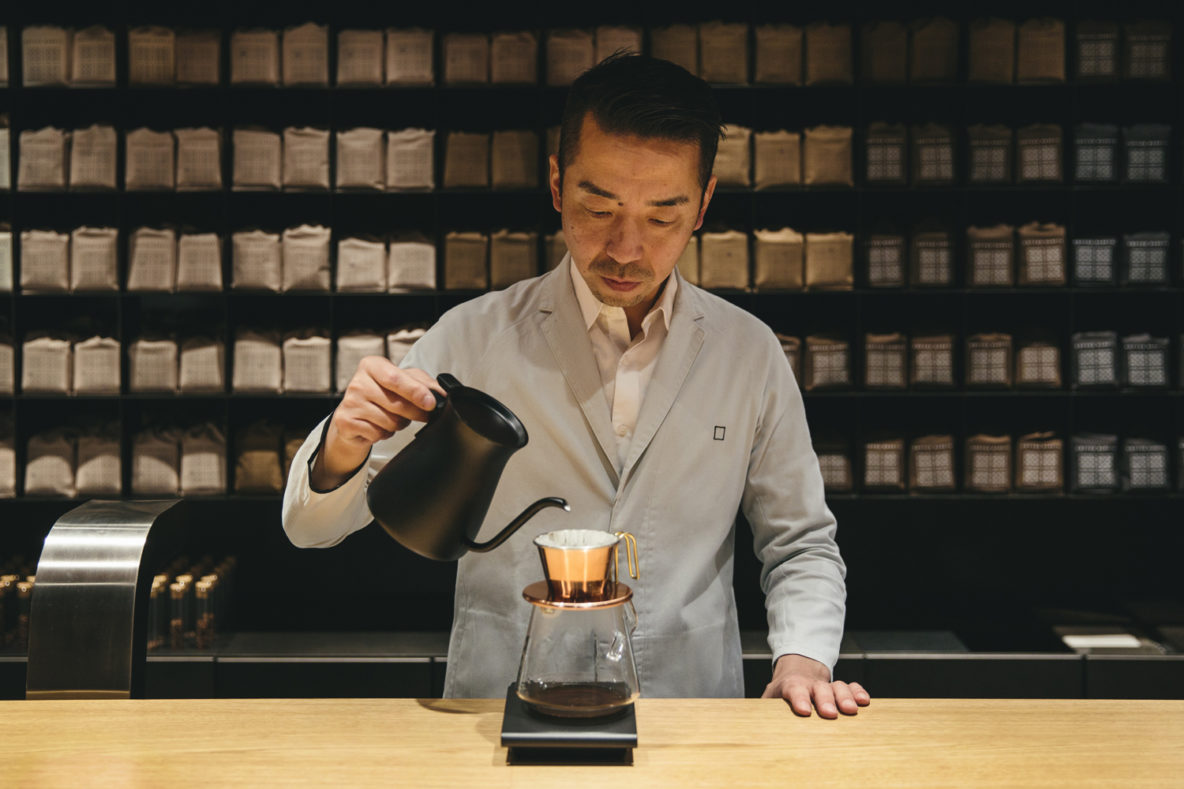Of all the things to be passionate about, mold that grows on rice may seem a strange one. But without koji, the specific type of mold that is used in the fermentation of miso, soy sauce, sake and shochu, Japanese cooking would be unimaginable. And because of this, Hiroshi Terasaka is absolutely smitten with this humble fungus, and his passion is infectious. While bringing out samples of koji, Terasaka explains the seemingly endless culinary possibilities of this under-celebrated ingredient. It is what gives miso and soy sauce their distinct umami flavour, and yet its powers are not limited to savoury foods. “Most Japanese people have a vague idea of what it is, but I wanted to make a place where you can really experience and taste the wonders of koji. And since Kamakura didn’t have a koji shop or cafe before we opened, this seemed like the perfect place to start,” Terasaka says. Born in Fukui prefecture, Terasaka and his siblings are the fourth generation of a family of koji makers. They are perhaps the only koji manufacturer left in Japan that grows their own rice used for the production of the koji, which lives off the starch in steamed rice. After a stint living in Canada, Terasaka spent two years learning the ins and outs of the family business. Once confident in his knowledge of koji and its production, he decided that he wanted to spread appreciation for koji in another region of Japan. “I was involved in opening a casual Japanese restaurant in Toronto and I really enjoyed it, so I wanted to try my hand at opening my own business,” he says. Sitting at the very end of a narrow footpath in an area that is removed from the crowds around Kamakura station and its famous temples, Sawvih is surrounded on two sides by a bamboo grove, giving it a natural serenity. Terasaka commissioned an architect to design a structure that would accommodate a shop and cafe on the ground floor, and living space for him and his family upstairs. The result is a modern, minimalist home and retail space with clean lines and lots of natural wood and light. Entering through the front door of Sawvih, customers find themselves in a small shop space, where Terasaka sells canvas clothing, selvage denim jeans, and work boots, many of which are his own original creations made by top producers across Japan. “Farmers and koji makers need to wear durable work clothes,” he says. “But I wanted to make work clothes that still look stylish.” Just a few steps through the small garden and outdoor seating area is the door to the cafe space at the back: a simple but welcoming room with a single wooden table surrounded by hexagonal stools. Here, Terasaka serves koji ginger ale and lattes, as well as koji sweets made by his brother in Fukui. These might include soy tiramisu, brownies or frozen yogurt. Terasaka also conducts koji workshops in the space on an … Read More
Cafe Casa
When Cafe Casa’s popular hotcakes were featured on a well-known Japanese television program, the lines of customers waiting to try one stretched down the block for several weeks. But while the cafe’s fluffy, thick version of a classic pancake may be what draws many people there initially, regulars know that it has much more than that to offer. Tucked behind a welcoming facade of colourful plants and twinkling string lights, Cafe Casa is in many ways a quintessentially Tokyo establishment, representing both the old and the new. It has occupied its homey space for over three decades, and its die-hard customers have fond memories of the days when its original proprietress would serve them cakes and coffee while engaging them in a conversation on whatever topic took their fancy. Today, the faces have changed, but the friendly atmosphere still remains. The cafe is now run by the original owner’s daughter, Ai, and her American husband, Jonathan Hebert. The mother still drops in from time to time to mingle with the diners, and the family dog, Mame-chan, also holds court in the hall. For Hebert, it’s not a life that he could have imagined for himself when he was working as a decorative painter in Boston, but it’s one he has embraced wholeheartedly. “I started off by washing the dishes when everyone else was busy making hotcakes, and I have gradually learned the ropes since then,” he says. Hebert and his family live above the cafe, and on a typical day he is the first one in the kitchen, preparing the hotcake batter and making the nel drip coffee, a time-consuming process that he describes as a kind of meditation. Next come the part-time staff, who prep for the lunch rush before Ai comes down and begins the cooking. While some of the menu items, including the famous hotcakes, have been passed down from her mother, Ai developed many of the current recipes herself. Having studied cooking in Florence, she enjoys experimenting with different methods and combinations that are well suited to Casa’s tiny kitchen. One of her best-selling inventions is the baked keema curry, which consists of a layer of rice in a skillet, topped with spicy curry, shredded cheese, and a whole egg before being cooked in the oven. “Unless we continue to innovate, people get bored with it,” Hebert says. “We’re trying to turn the cruise ship. We don’t want to change too much too quickly, but we do want to take it in a new direction.” That new direction also includes the cafe’s look. While it retains its classic Showa-era charm, Hebert has used his artistic skills to put his own personal touch on it. He added colourful stained glass windows to the front wall, and his illustrations grace the menu and signboards. “We just want this to be the place where people are comfortable coming. Casa in Spanish is house, so I want this to feel like a home, for Japanese and foreigners alike,” Hebert says.
Onibus Coffee
Atsushi Sakao began his life, he admits, with blinkered view of the world. Growing up in rural Chiba prefecture, southeast of Tokyo, he never met a non-Japanese person until high school. A fleeting encounter with some Australian hitchhikers left a deep impression, inspiring him to embark, some years later, on his first overseas adventure, backpacking across Asia and Australia. “Wherever I went, I saw people going to the same cafe every morning, drinking coffee while chatting with the staff, receiving energy from that and then starting work. It was a great thing in my eyes,” Sakao says. “That kind of cafe culture hadn’t come to Japan yet, so after returning, I moved to Tokyo and began working in a coffee shop.” In March 2011, a massive earthquake devastated Japan’s Tohoku region. Sakao dropped everything and headed north to help with the recovery with a group of volunteers. “As we worked, we heard the people’s stories of death and loss. They said we only get one life, so make it count,” he recalls. It was the push he needed. Sakao opened his first Onibus Coffee a year later in a small wooden house he and his father, a carpenter, built together in Okusawa, a residential suburb in west Tokyo. The name is the Portuguese word for a public bus, and conveys his desire to foster a sense of community. “Cafes are like a starting point where you can meet people and exchange information,” Sakao says. “I wanted to make a place where people can meet and it can be the start of something.” The Okusawa site still exists, but his main Onibus shop is now located in Nakameguro, nestled between a park and a railway line. On a typical morning, trains rumble past and children squeal with laughter in the playground as Sakao’s baristas brew up black drips and lattes for workers heading into the city, early-rising coffee tourists, and runners back from exercising along the nearby river. The smell of beans roasting onsite fills the space and wafts out into the surrounding area. “As coffee makers, naturally we make our beverages with as much care and attention as we can,” he says. “We also want to make sure as many aspects of our business as possible share our values of traceability and sustainability.” By January 2018, Sakao was operating four sites: the two Onibus shops, a coffee stand in Shibuya called About Life, and another, Ratio &C, inside a smart bicycle store in Gaienmae. Each location shares the culture of warm hospitality and respect that Sakao has cultivated and applies to all his relationships, from the producers who grow his beans to the artisans who make his cups and spoons. “Our team, our customers, and our producers – there are three groups that make up the Onibus family,” says Sakao. “If I can improve the lives of all three, I’ll be happy.”
Maruichi Bagel
The moment Miho Inagi decided she would open an authentic New York-style bagel shop in Tokyo, she burst into tears – tears of excitement. But as she collected herself a few minutes later, she realised there was a major problem with her plan: she had no idea how to bake. “Ideas were rushing through my head. I just had this very clear vision of what I was going to do,” she recalls. “But I knew I had a hard road ahead of me. Because I’d never even baked a loaf of bread.” Inagi’s epiphany came in 1999, when she was celebrating her graduation with a holiday in New York. At Manhattan institution Ess-a-Bagel, she ordered a pumpernickel bagel with a filling of Spanish eggplant salad. “I just thought ‘what’s that weird brown one?’” Inagi recalls. ‘As soon as I tasted it I fell in love. It was so different from what I’d had in Tokyo, I began to wonder whether bagel makers in Japan had ever eaten the real deal.” Inagi befriended Ess-a-Bagel’s owners, the late Eugene and Florence Wilpon. They promised that if she came back the following year, they’d put her to work in the store. “I don’t think they really believed I would do it,” she says. Twelve months later, having quit her Tokyo desk job, she was back and ready to learn the art of making a bagel. First she manned the takeout counter, where she mastered how to sling a bagel – and speak like a New Yorker. Later she worked in the kitchen, learning how to roll, boil and bake like a pro. The name Maruichi Bagel loosely translates as ‘Number One Bagel’, with maru meaning ‘circle’, after the shape of the shop’s main event. The business came to life in 2004 in tiny premises in a smart western suburb, later moving to its current location in a converted garage in Shirokane. At lunchtimes and on weekends, customers wait patiently in a line down the street. “Eugene and Florence always told me that I shouldn’t expect to replicate their bagels exactly, and that I should take advantage of local ingredients and flavours to create my own style,” says Inagi. So Maruichi sells both New York-style classics such as ‘Sesame’ or ‘Everything’ bagels, and newer recipes like ‘Caraway Raisin’ or ‘7-Grain Honey Fig’. The kitchen also makes ‘bagelwiches’ to order, loading them with fillings like pumpkin, sweet potato and bean salad, vegetables and olives, all alongside smoked salmon, prosciutto and – of course – varieties of cream cheese. Hand-rolling the dough creates its signature dense-yet-tender texture, and boiling it gives the crust its distinctive crunch – these things, as well as the baking, are done by a core team of kitchen staff. But to this day it’s Inagi who crafts the dough. “It’s the key to every good bagel,” she says. “Making it consistent, day in and day out? That’s my job.”
Sakurai Japanese Tea Experience
Dressed in a spotless white coat, Shinya Sakurai looks every inch the doctor as he slowly measures, heats and pours water into an array of receptacles on the worktop. The object of his intense concentration, however, is not a science experiment, nor are his actions unfolding in a laboratory. Sakurai is, in fact, preparing what is likely one of Tokyo’s finest cups of Japanese tea in a contemporary teahouse. There are perhaps few people who know more about the intricacies, nuances and rituals of Japanese tea than 37-year-old Sakurai, who has devoted the past 14 years of his life to all things tea. It was in 2014 that the mixologist-turned-tea guru opened Sakurai Japanese Tea Experience, first in a space in Tokyo’s Nishi-Azabu neighbourhood, before moving two years later to its current fifth-floor home in Aoyama’s Spiral Building. His goal is simple: in a culture saturated with craft coffee, he aims to reconnect generations of younger Japanese with the increasingly neglected world of tea. “I want to offer people a new way of enjoying Japanese tea,” he explains. “Today, there are so many different teas you can buy in plastic bottles and so many young Japanese have never even tasted a properly prepared cup of tea. I want to change that.” The experience begins the moment customers cross the threshold. The small but perfectly formed space, created by Tokyo design firm Simplicity, is a serene and minimal enclave of clean-lined natural materials, from dark woods to warm copper, complemented by a wall of windows framing an urban skyline. On the menu are around 30 teas sourced from across Japan and loosely divided into three categories: straight, blended (with seasonal ingredients ranging from persimmon to yuzu), or roasted on site by Sakurai in the corner of the tearoom. Explaining the unique qualities of Japanese tea, he says: “Most teas are heated by fire when they are being made, but Japanese tea is made using steam. This makes it a very pure type of tea.” Using an impressive 40 litres a day of hot spring water from southern Kagoshima, Sakurai performs his contemporary take on tea ceremony at an eight-seat counter. And he is meticulous in his preparations. “You have to be very precise,” he says. “Even the slightest change in temperature to the water can change the flavour entirely. For sencha green tea, for example, you must use a lower temperature of water—if it’s too hot, it becomes bitter.” Also on the menu are pretty, bite-sized Japanese sweets (from chestnut yokan jelly to flavour-bursting walnuts and dates in fermented butter), segueing smoothly into tea-inspired cocktails after dark (a refreshing fusion of sencha tea and gin is a typical highlight). Sakurai’s tea-themed tools and accessories are no less eye-catching, from handcrafted tin tea caddies and traditional bamboo ladles to delicately minimal ceramics from Simplicity’s product line S[es]. “The whole setting is very important,” explains Sakurai. “In order to enjoy tea, the atmosphere has to be just right.” Best of all? It’s healthy … Read More
Koffee Mameya
In the backstreets of Harajuku there used to be a little wooden house with a coffee kiosk on its ground floor. It was there that Eiichi Kunitomo served what some argued were Tokyo’s best cappuccinos. When that house was razed in early 2016, taking Omotesando Koffee with it, even international media outlets wrote articles lamenting its demise. But as the fans were mourning, Kunitomo was planning. He travelled the world and all over Japan, meeting roasters and fine tuning the concept for his next step. In January 2017 he opened Koffee Mameya where his old shop once stood. Kunitomo and fellow barista Miki Takamasa still wear their pale blue lab coats, but they take the metaphor much further now. Their minimalist interior is divided into service counter and waiting room. When it’s your turn to approach the counter, you discuss your preferences and they’ll suggest something suitable from over a dozen roasts. And like the serious medicine in a pharmacy, the drugs are behind the counter. Kunitomo believes the consultation phase is essential, so he takes the time to explain the flavour camp and finish of the various options, as well as the roasters who provide them. He works with a handful of his favourite roasters and assembles a spectrum of flavours from elegant light roasts to rich dark ones. There is a menu that lists varietal, roaster and provenance, and plots the beans by roast and mouthfeel, but in a departure from the specialist coffee norm, it offers no tasting notes. “It’s not easy to understand ‘hint of lemon’ and that kind of thing,” says Kunitomo. When you’ve chosen your bean, you can have it poured over a Kalita Wave dripper or served as espresso from the Synesso machine, but it must be black. There is no place here for anything that would adulterate the work of the grower or roaster. It can be a long process, and for those waiting in line… they can wait, says Kunitomo. He’s not playing a volume game. Kunitomo began his career two decades ago pulling espressos in Osaka. He refined his technique in a Neapolitan coffee shop, and when he returned from Italy, the specialty coffee scene was starting to bubble. Omotesando Koffee opened at the right time, in the perfect place, to play a key role. It proved such a success that it spawned spinoffs in Tokyo’s Toranomon district and Hong Kong, but when Kunitomo was invited to reopen in the new building, he took the space but left the format behind. “I wanted to have a slower pace,” he says. “And there are plenty of places you can drink coffee out now, so I wanted to introduce coffee you can drink at home.” To underscore the point, Kunitomo and Takamasa devote the final hour of each weekday to workshops, teaching customers how to get the best out of their beans. For casual visitors, Mameya is a coffee shop with painstakingly particular baristas. For regulars, it’s more of a bean shop … Read More
- Page 1 of 2
- 1
- 2

